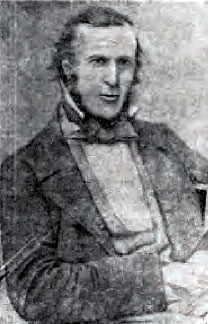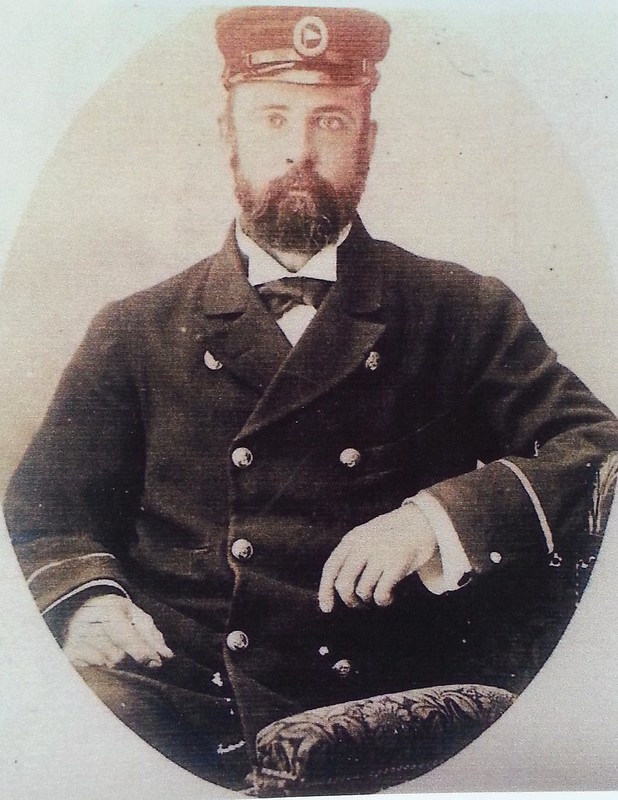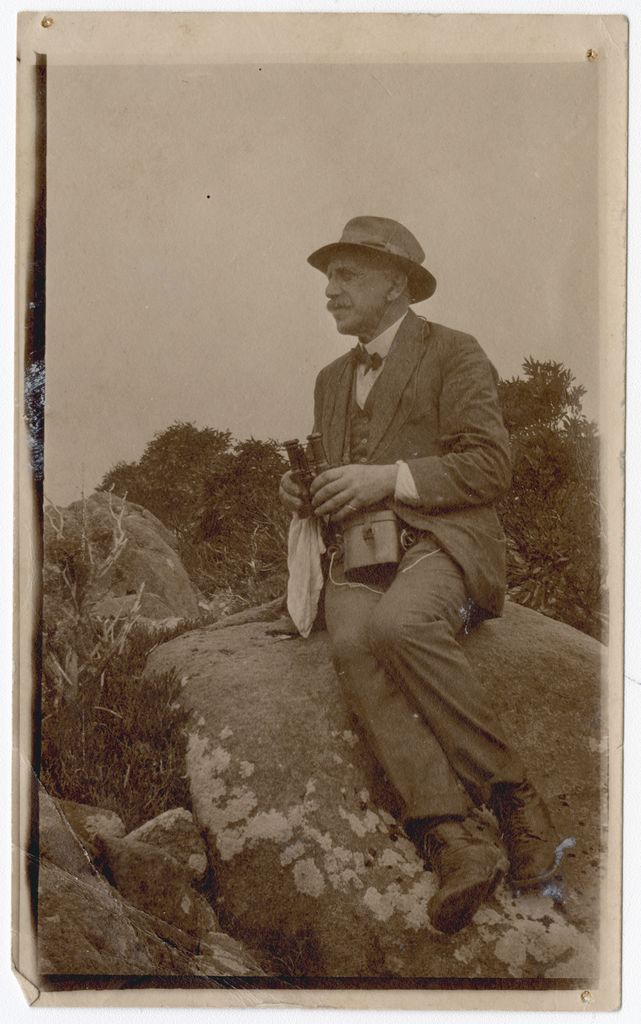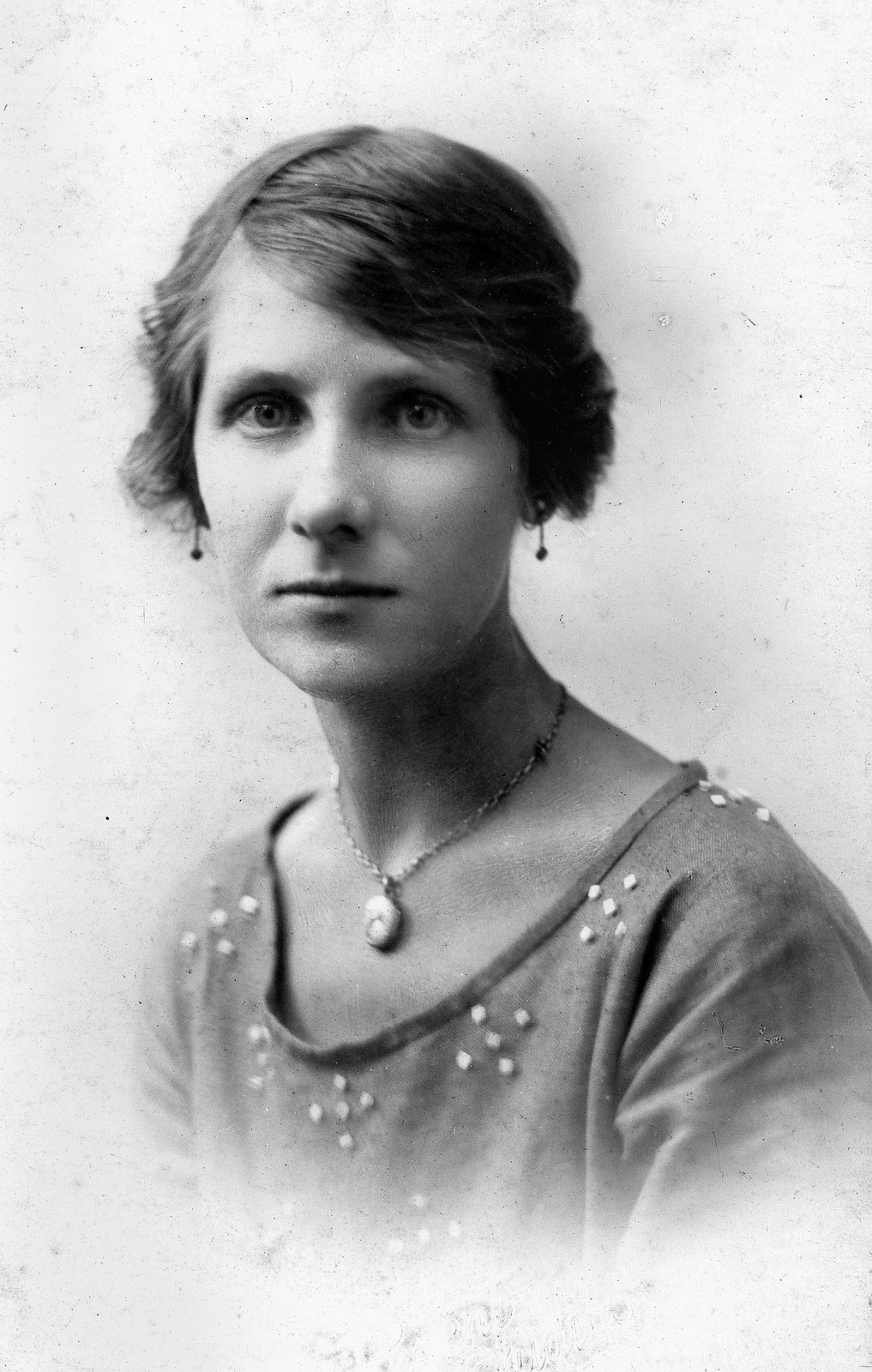Local Artists
Stories about Artists remembered in Toowong Cemetery
Use the Toowong Cemetery map to help you visit the graves in this story. Click the grave location (portion‑section‑grave) beside each person's name to view an aerial image of the grave.
Le Fevre James Cranstone (2A‑15‑22)
Cranstone was born in 1822 at Hemel Hempstead, England, the son of Quakers James and Maria Cranstone (née Le Fevre). In September 1859, he began a nine‑month journey through the east and mid‑west of the USA. During this journey he prepared 296 watercolor sketches now at Indiana University. The purpose of his trip was to visit cousins who lived in Richmond, Indiana and Virginia. He arrived in Brisbane in the early 1880s with members of his family and created many sketches of early Brisbane including Toowong Cemetery. Le Fevre died on 22 June 1893 aged 71 years.
Isaac Walter Jenner (5‑43‑16)
Jenner was born on 18 March 1837 at Brighton, Sussex, son of Thomas Jenner, blacksmith, and his wife Harriet, née Walter. Without known formal education, he worked on oyster boats and signed on for a voyage in Arctic waters. In March 1855 he joined the Royal Navy, serving during the Crimean War in the Black Sea. Discharged in 1865, he learned to paint and worked as a landscape and marine painter in 1873‑79 at Brighton and at Hove in 1880‑83. He exhibited at Brighton and once at the Royal Academy. He decided to migrate and reached Brisbane by R.M.S. Roma on 19 September 1883.
Jenner made a living by selling paintings, holding art unions and teaching at Miss O'Connor's School, Oxley, and at the Brisbane Technical College in 1887‑89. Although he travelled in New South Wales and New Zealand in 1889, he exhibited only in Brisbane and at the Centennial International Exhibition of 1888‑89 in Melbourne. He had helped to found the Queensland Art Society in 1887. He moved his studio in 1890 to Montrose Road, Taringa, where he lived and worked for the rest of his life.
A self‑taught marine and landscape painter of considerable ability and technical skill, Jenner painted local scenery and continued all his life to paint English scenes from memory. His most popular subjects were the Sussex and Cornish coasts and large historical seascapes. In 1895 he gave one of his large seascapes, 'Cape Chudleigh, Labrador' (1890) to the Queensland National Gallery soon after its opening.
He died at Taringa on 1 March 1902. He was survived by his wife Mary, née Jenkins, whom he had married on 23 May 1860 at Anthony, Cornwall, and by three sons and three daughters.
Marine artist - Isaac Walter Jenner (1836 - 1902). Aussie~mobs.
Richard Godfrey Rivers (12‑24‑4)
Rivers was born probably in 1859 at Plymouth, Devon, son of Richard Rivers, landed proprietor, and his wife Bertha, née Harris. He studied at the Slade School of Fine Art, University College, London (1877‑83) receiving the prize for landscape painting in 1883 and exhibiting at the Royal Academy of Arts in 1884. In 1889 he came to Australia. He taught at Katoomba College, NSW, and then was appointed second art master at Brisbane Technical College (1890‑1910, part‑time 1910‑15). He soon emerged as leader of Brisbane's artistic community and the first artist member of the Queensland Club in 1891.
Rivers also taught at his studio, at the Brisbane High School for Girls and at Brisbane Girls' Grammar School. Rivers was president of the Queensland Art Society in 1892‑1901 and 1904‑08. Largely through his efforts the Queensland National Art Gallery ultimately opened in 1895.
His course at the technical college embraced both art and craft. His extant work includes the decorative painting of angelic figures on the ceiling of the sanctuary in St Mary's Church, Kangaroo Point (1892), his design of the altar in the Blessed Sacrament Chapel, St John's Cathedral, Brisbane and other furniture in the cathedral. The Godfrey Rivers medal was established at the technical college in 1929 by his wife Selina Jane, née Bell, whom he had married in St John's Cathedral on 25 September 1901.
Rivers died on 4 February 1925 of typhoid fever while on a visit to England and his ashes were interred here. His wife and daughter survived him. The Godfrey Rivers Trust, founded by his wife for the Queensland Art Gallery, established the Godfrey Rivers prize (acquisitive) and purchased art works. His most popular work, 'Under the Jacaranda' (1903), hangs in the Queensland Art Gallery and features his wife.
Godfrey Rivers, seated on a rock with binoculars. Unknown author - Daphne Mayo Collection, UQFL119, Fryer Library, The University of Queensland Library.
Eliza Jeanettie Sheldon and Edwin Arthur Vincent Sheldon (7‑95‑13/14)
Jeanettie Sheldon, was born on 24 May 1885 in Williamstown, Victoria, the eldest of five children of English‑born parents Edwin Arthur Sheldon and his second wife Phoebe Emily, née Fisher. By 1890 the family had settled in Brisbane, where Edwin ran a jewellery business at Fortitude Valley. Vincent was born on 3 July 1895 in South Brisbane, the youngest of the five children.
Jeanettie studied art at Brisbane Technical College. Between 1909 and 1919 she exhibited oils, sketches and painting on porcelain at shows held by the (Royal) National Agricultural and Industrial Association of Queensland. She opened the Sheldon Gallery in 1921. Elected to the (Royal) Queensland Art Society, she served as vice‑president (1922), secretary (1923‑31 and 1937‑43) and a council‑member (1932‑36). From 1923 to 1960 she exhibited pottery, oils and watercolours at its shows.
Vincent was educated by the Christian Brothers at St James's School, Brisbane. He studied commercial art in the United States of America (1920) and England (1924), and worked as a freelance cartoonist in Brisbane in 1924‑26. He visited London in 1929 to learn drypoint under W. P. Robins at the Central School of Arts and Crafts, Holborn. The British Museum acquired three of his etchings, and the Victoria and Albert Museum two monotypes.
Back in Brisbane, Vincent taught printmaking at his home at Clayfield. In 1931 he was elected a member of the Australian Painter‑Etchers' Society. His drypoints of country scenes, and of Brisbane and its landmarks, were described in 1934 as being executed with 'rare skill' and 'joyous animation'. On 9 July 1934 at All Saints Church, Wickham Terrace, he married with Anglican rites Cynthia Ruth Sturtridge; they were childless.
During World War II Vincent worked in a munitions factory until illness forced him to resign. Survived by his wife, he died of a coronary occlusion on 19 July 1945 at Boolarong, near Caboolture, and was buried with Catholic rites. A memorial exhibition of his work was held in Brisbane in 1948. In 1981 Sheldon's widow gave more than two hundred of his works to the Queensland Art Gallery.
Jeanette Sheldon - State Library of Queensland
Acknowledgements
Written by Dr. Hilda Maclean
Source
- Bradbury, Keith, Sheldon, Eliza Jeanettie (1885-1974), Australian Dictionary of Biography, Volume 16, Melbourne University Press, 2002, pp 227-228.
- Hogan, Janet, Rivers, Richard Godfrey (1859?-1925), Australian Dictionary of Biography, Volume 11, Melbourne University Press, 1988, pp 397-398.
- Maynard, Margaret, Jenner, Isaac Walter (1837-1902), Australian Dictionary of Biography, Volume 9, Melbourne University Press, 1983, p. 480.
- Smith, Donald, Lefevre James Cranstone : his life and art, Richmond, Virginia : Brandylane Publishers, 2004.



